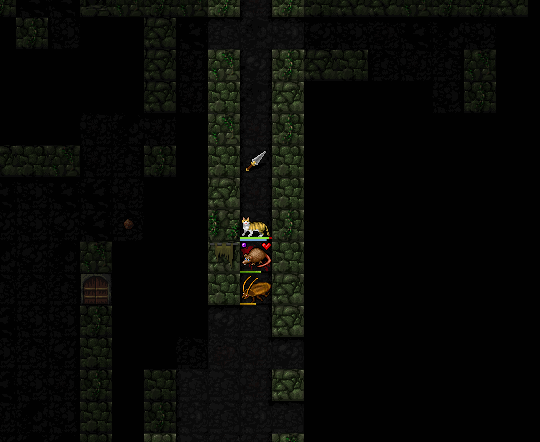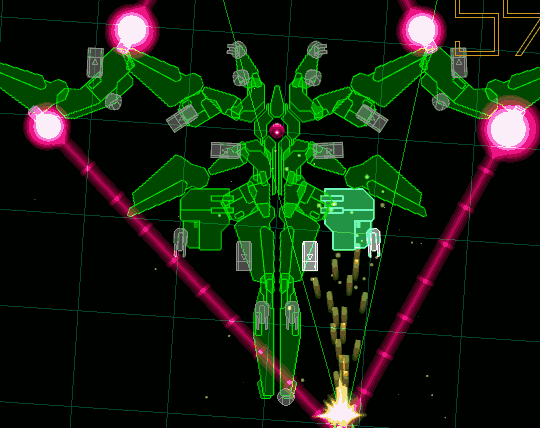
Procedural Generation and Shared Content
There’s a symbiotic relationship between content that’s procedurally created by the computer and user-created content. The most obvious connection is that they both need similar frameworks, with many possible options. But the relationship goes deeper than that.
Roguelikes have a long history of bones files. When a character dies in NetHack or Dungeon Crawl, that’s not the last you’ll hear of them. Their data is saved, allowing them to appear in future games as a ghost. In NetHack the entire dungeon level is saved, so you can even steal the original character’s (now cursed) equipment, or die to the same monster who killed them.
Where this really gets interesting is when you play on a multiplayer server, and can encounter the ghosts of other players. In addition to the usual content creation, the procedural generation system is capable of taking the content the players created in the course of the game and using it to extend its own generation.
You can take this principle quite a ways. Nethack goes so far as to incorporate the user’s email account into the game: on a properly configured server, if you get an email while you’re playing, a mail daemon will pop into the level and hand you your email written on an in-game scroll. But you don’t have to go that far to recognize that players can be incorporated as part of the procedural generation system. Having the player act as a critic can help bridge a difficult gap in content generation. If you take it a step further and crowdsource the filtering, it opens up a host of machine learning techniques.
Eventually, you may be able to combine machine learning and crowdsourcing to emulate the human-improvisation development process of The Snowfield.

Designing games that share user content is something that Craig Perko has talked about quite a bit. I think he’s on to something with his ideas of developing a language for these interactions and to be able to look beyond the binary of survival challenge mode and creative editor mode.
A procedural generation that can take player creations or player feedback and incorporate it into the next iteration, like Galactic Arms Race and Warning Forever do on a small scale is a potentially powerful way to structure a meta-generator. It’s not an approach that has been tried often, mostly because it has large up-front costs.

The idea of sharing other players’ content was, of course, one of the big deals when Spore was in development. Still is, really, since Sporepedia currently lists 188 million player-created creatures. (I have my opinions as to why Spore didn’t become the phenomenon the developers were hoping it would be, but I don’t think the shared user creations was one of them.)

I’ve often thought that this is one area where Minecraft hasn’t closed the obvious circle. It’s a game all about exploring procedurally generated content and shaping it with the user’s creations, but the arrow only goes in one direction. If there was a way to incorporate user creations back into the generator, so that new worlds could be populated with the ruins and artefacts of other players’ creation, the feedback loop could be sustained within the game itself.
